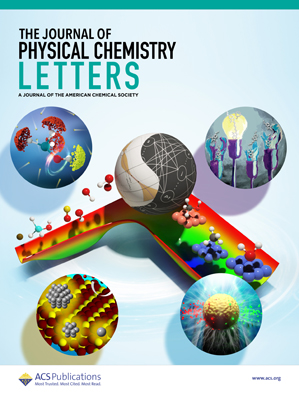惠更斯时钟量子模拟中的噪声诱导量子同步与纠缠
IF 4.6
2区 化学
Q2 CHEMISTRY, PHYSICAL
引用次数: 0
摘要
我们提出了惠更斯时钟的量子类似物,两个自旋的相位通过与共享环境的相互作用而同步。这种环境的作用就像机械时钟中的擒纵机构,可以调节齿轮系,并允许离散的定时前进。在我们的模型中,两个自旋的相对相位通过相互关联的环境实现同步。我们证明,一些论据可以大大降低量子比特系统允许测量的卡入度,从而简化问题。我们提出了一种计算最终密度矩阵相关性量子化程度的高效数值方法,为 3 级和 4 级密度矩阵提供了严格的上限。我们提出了在两个核自旋之间实现噪声诱导同步的可能性,这两个核自旋耦合到一个正在进行动态解耦的共同安其拉上。本文章由计算机程序翻译,如有差异,请以英文原文为准。

Noise-Induced Quantum Synchronization and Entanglement in a Quantum Analogue of Huygens’ Clock
We propose a quantum analogue of the Huygens clock, where the phases of two spins synchronize through their interaction with a shared environment. This environment acts like the escapement mechanism in a mechanical clock, regulating the gear train and allowing discrete timing advances. In our model, the relative phases of the two spins synchronize via a mutually correlated environment. We demonstrate that several arguments can significantly reduce the cardinality of the allowed measurements for a system of qubits, thus simplifying the problem. We present a numerically efficient method to calculate the degree of quantumness in the correlations of the final density matrix, providing a tight upper bound for rank 3 and rank 4 density matrices. We suggest a potential realization of noise-induced synchronization between two nuclear spins coupled to a common ancilla undergoing dynamical decoupling.
求助全文
通过发布文献求助,成功后即可免费获取论文全文。
去求助
来源期刊

The Journal of Physical Chemistry Letters
CHEMISTRY, PHYSICAL-NANOSCIENCE & NANOTECHNOLOGY
CiteScore
9.60
自引率
7.00%
发文量
1519
审稿时长
1.6 months
期刊介绍:
The Journal of Physical Chemistry (JPC) Letters is devoted to reporting new and original experimental and theoretical basic research of interest to physical chemists, biophysical chemists, chemical physicists, physicists, material scientists, and engineers. An important criterion for acceptance is that the paper reports a significant scientific advance and/or physical insight such that rapid publication is essential. Two issues of JPC Letters are published each month.
 求助内容:
求助内容: 应助结果提醒方式:
应助结果提醒方式:


